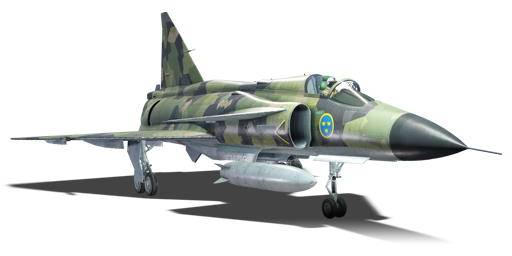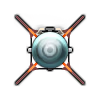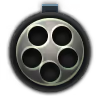



The JA37C was developed during the 1980s, with the JAS 39 Gripen still far away of being ready, the C variant of the Viggen extended the lifetime of the aircraft. The aircraft received access to countermeasures, a new signal processor, a new PS 46/A radar with the ability to follow multiple targets at once and display them for the pilot. The aircraft served up until the introduction of the JA37D, which was introduced in the 1990s, all JA37Cs were converted to the new D standard.
It was introduced in Update "Direct Hit". The JA37C is a very peculiar aircraft for its BR, it does not have the best weapons, nor the best flight performance or the most amount of weapons. However, it does have a good radar and is a good jack of all trades, being able to dogfight heavier aircrafts such as the F-4 Phantom while having good weapons like the RB-24J and the RB71 (Skyflash). The radar is the PS-46/A having all aspect Pulse Doppler search and track, which is usually found only at higher ranks.
flaps
flaps
flaps
brake
| Belt | Belt filling | Armor penetration (mm) at a distance: | |||||
|---|---|---|---|---|---|---|---|
| 10 m | 100 m | 500 m | 1000 m | 1500 m | 2000 m | ||
| HEI/SAPHEI | 49 | 46 | 36 | 27 | 20 | 15 | |
| SAPHEI | 49 | 46 | 36 | 27 | 20 | 15 | |
| HEI | 8 | 8 | 6 | 4 | 3 | 3 | |
| Name | Weight | Slot | ||||||
|---|---|---|---|---|---|---|---|---|
| 76.9 kg |  |  |  |  |  |  | ||
| 72.6 kg |  |  |  |  |  |  | ||
| 193 kg |  |  | ||||||
| 6 × | 337.5 kg |  |  |  |  | |||
| Drop tank (1250 liters.) | 100 kg |  | ||||||












Flight performance | |
|---|---|
Survivability |
|---|
Weaponry | ||
|---|---|---|